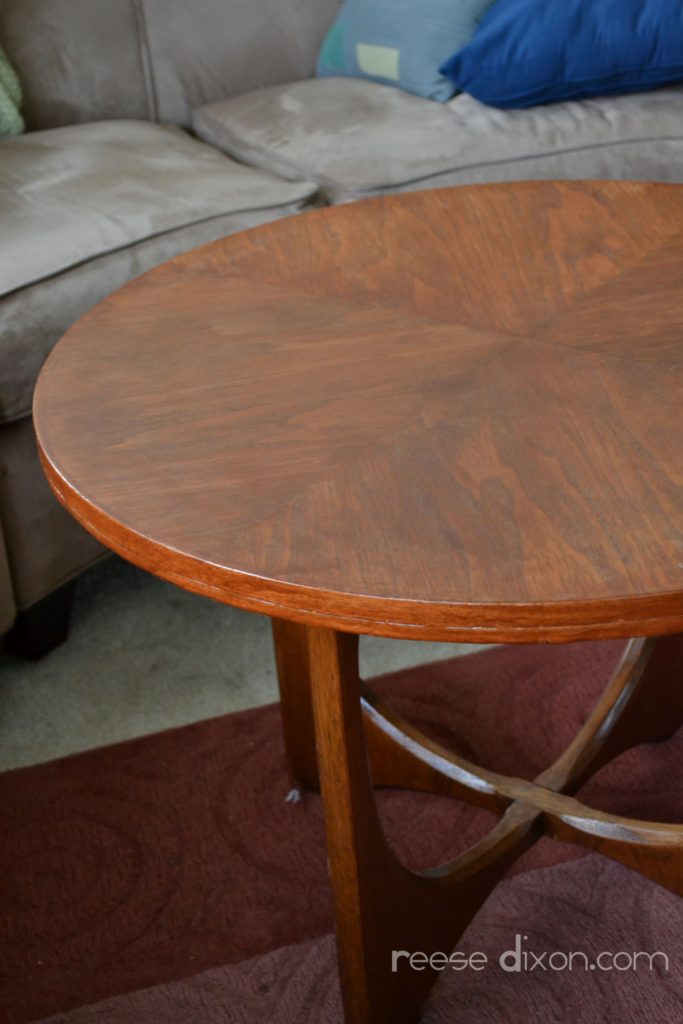
Long term obsessive readers or midcentury wonks might remember this great little table I picked up off of Craigslist. I’ve been meaning to refinish it for years and I finally got around to doing it with family coming in to town. It wasn’t in super great shape when we bought it, but I have not exactly been gentle to it over the last few years.
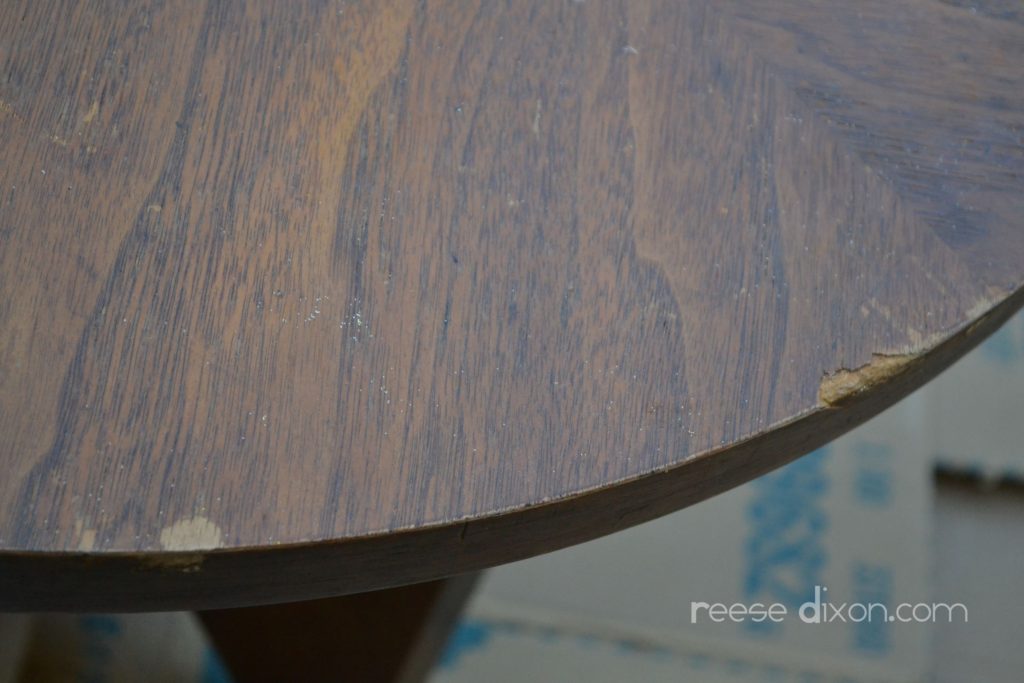
This big dent came when I bought it, with a huge chunk taken out of the veneer. The glitter and paint was my own addition as I’ve worked on a few dozen projects in front of the TV. I was never very careful since I had the refinish project on my agenda.
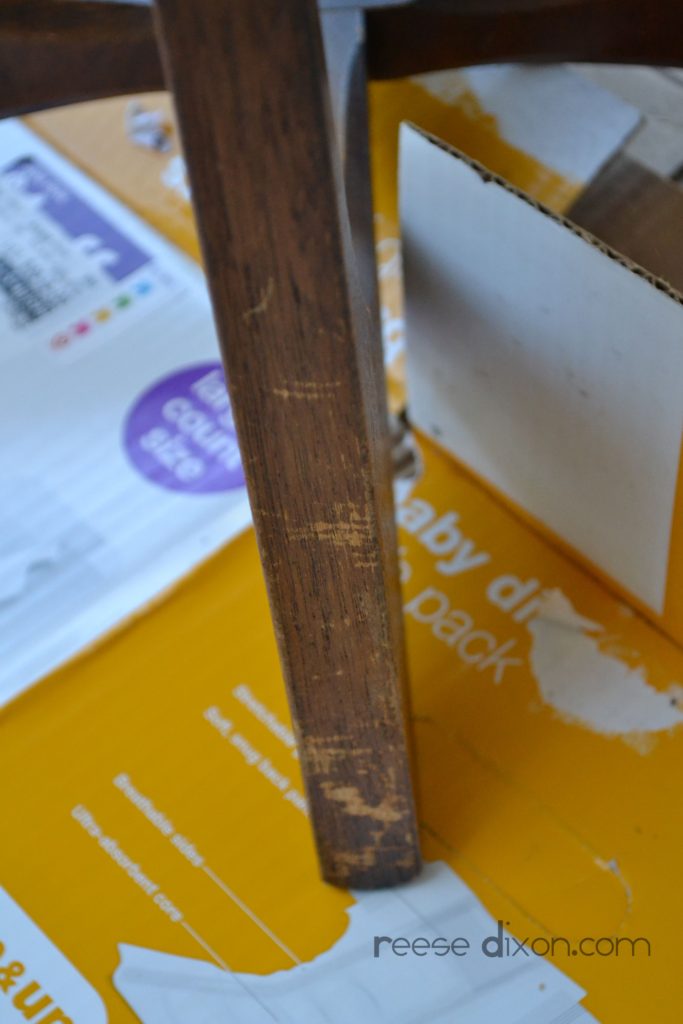
When Atti was little and teething, he went through a bit of a puppy phase where he chewed on all our furniture. Now that he’s safely out of that age, it’s time to give this table a little attention.
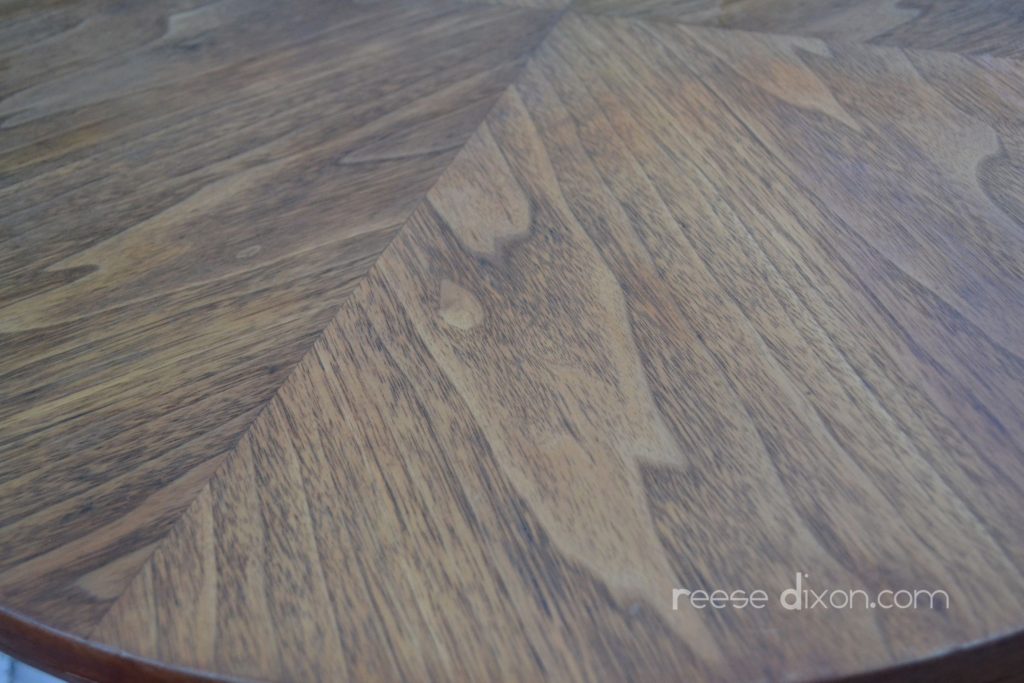
The first step is to remove all the old stain and wax and grime. My favorite stripper is this orange one, and it’s pretty painless. Just get a little paint brush and spread the stuff on, let it sit for a few minutes and then scrape it off with a little paint scraper. Rubber gloves and lots of paper towels make this job easy.
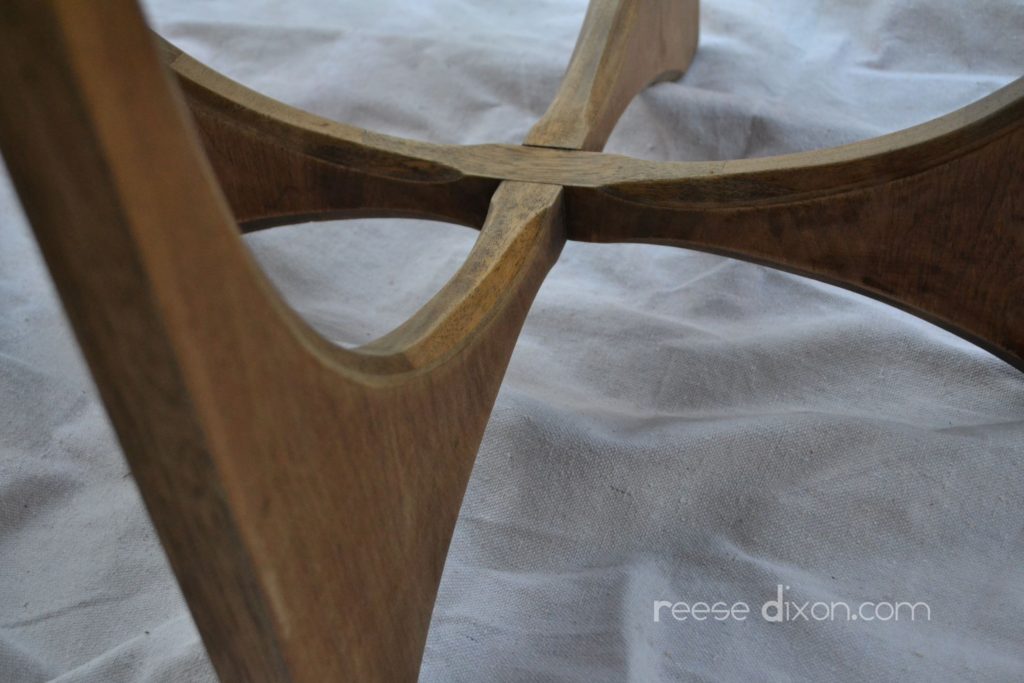
Give the table a nice sanding. If you have a table like this one with a pronounced grain, you don’t want to get too aggressive. Sand in the same direction as the grain with a fine sandpaper, and then a steel wool. I didn’t want to use my palm sander because the sanding leaves visible marks.
This table has a wood veneer (as opposed to a common plastic veneer) which needed some repair. The sheets of wood veneer are available online, and I found the strips of veneer at Home Depot. The strips are made for edges and come backed with a netting that holds the glue really well.

To fix the dent in the veneer I cut a small piece of wood in the shape of the hole and stuck it down with wood glue. When it was nice and secure I went back and trimmed it up to fit the edge and gave it a sanding so it all fit nice and smooth.
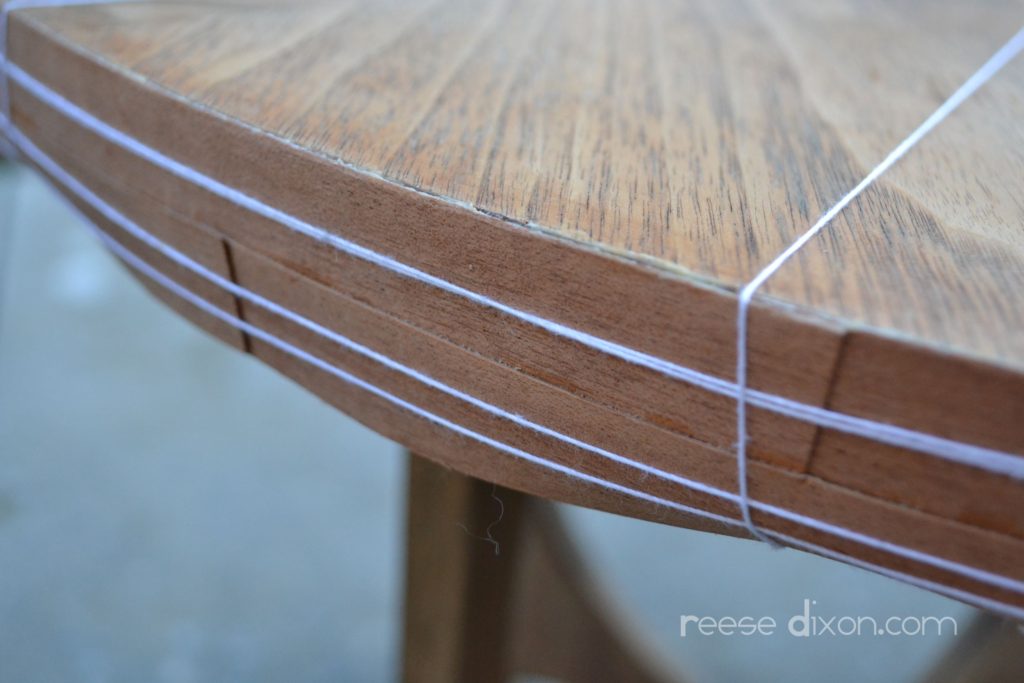
The veneer on the side was all torn up and peeling off, so I took all the old stuff off and glued on some new sashing. My table was just a little bit wider than the veneer strips, so I just put on two layers.
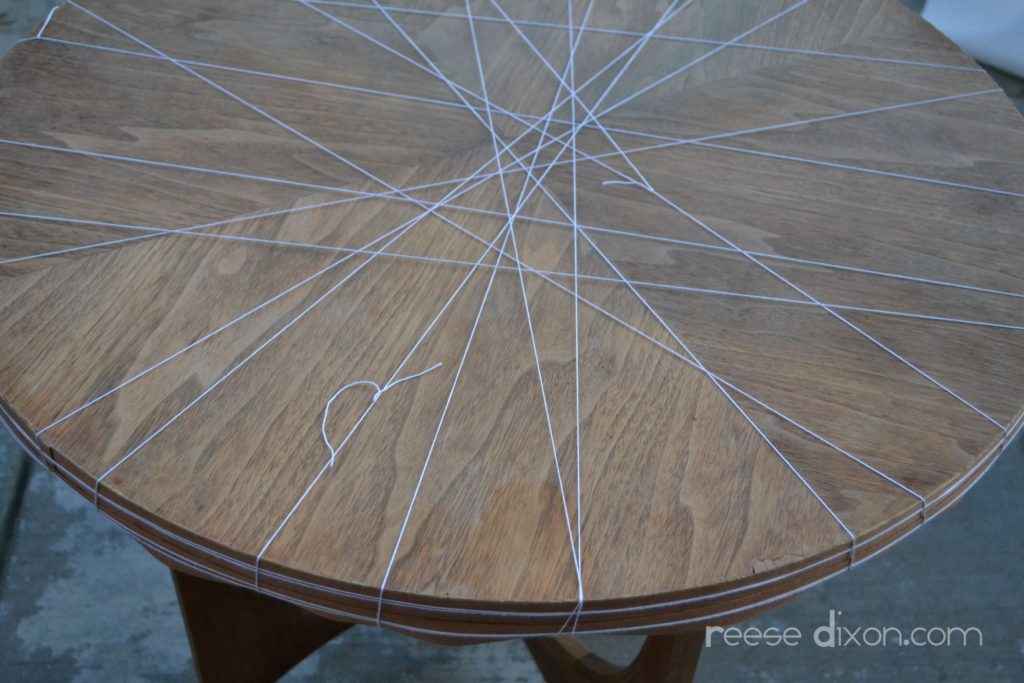
To keep the strip veneer in place while it dries, I tied twine around and around the table to hold it all tight and secure. They do make clamps that will do this job perfectly, but I didn’t want to shell out cash for one little job.
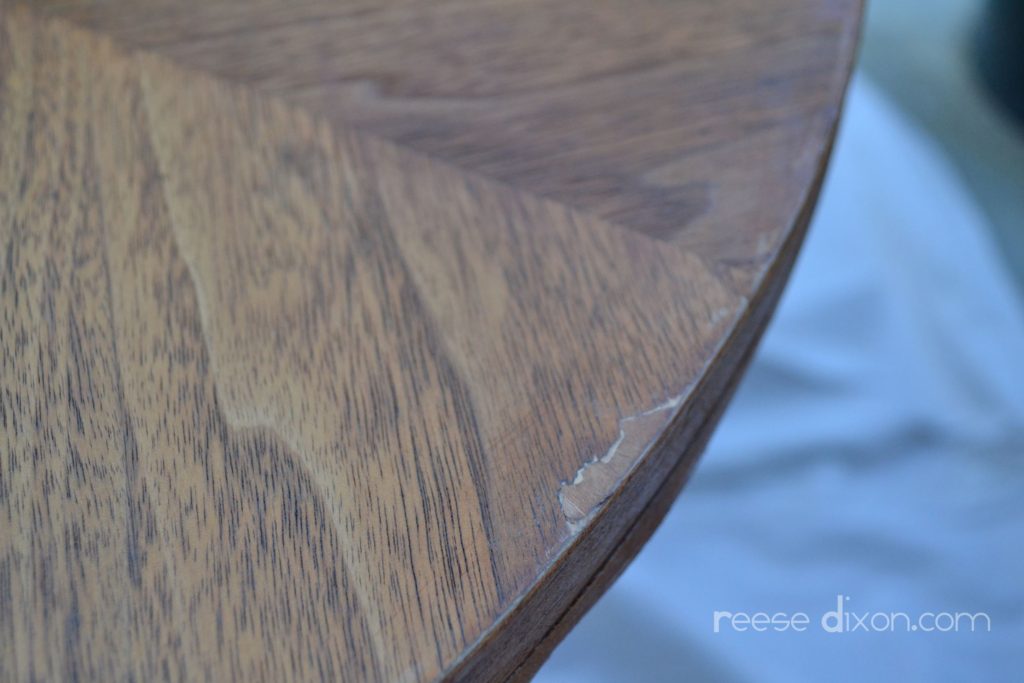
When the glue is thoroughly dry on your fixed dent, rub a little wood filler into the gaps. When that dries, give it another sanding until it’s flush with the surrounding veneer.
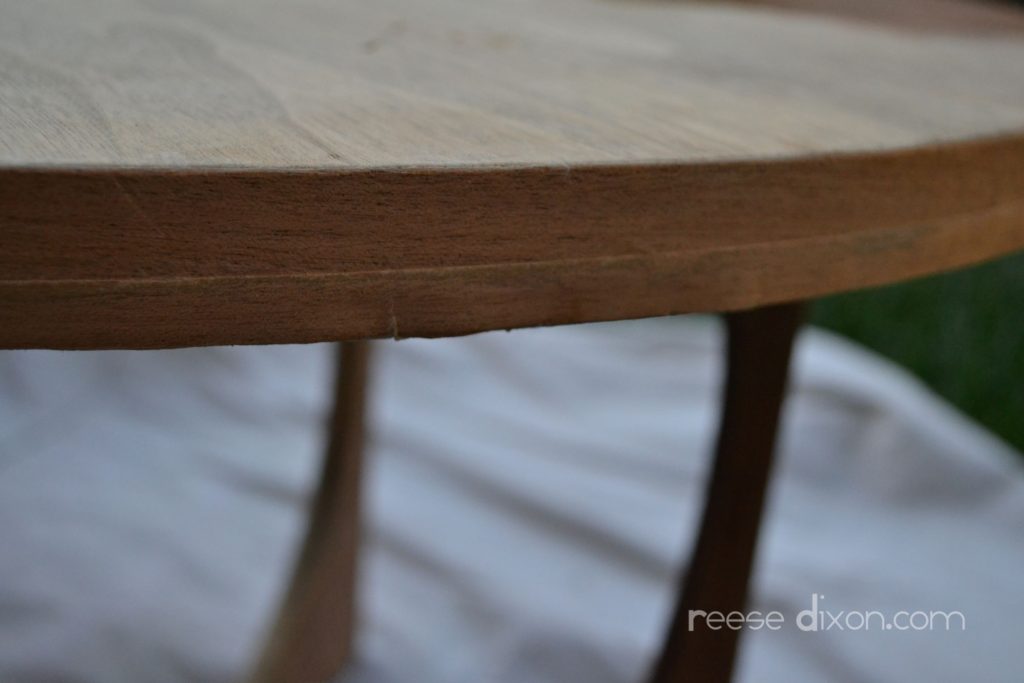
Let the glue on the sides dry overnight, and then take off all your twine. Give the veneer strips a thorough sanding to smooth down all those seams.
Use a tackcloth or microfiber cloth to wipe all the dust off and paint with a couple of coats with stain. I used a polyurethane stain that sealed and stained at the same time. Make sure you follow the directions, let each coat dry thoroughly, and lightly sand in between layers.
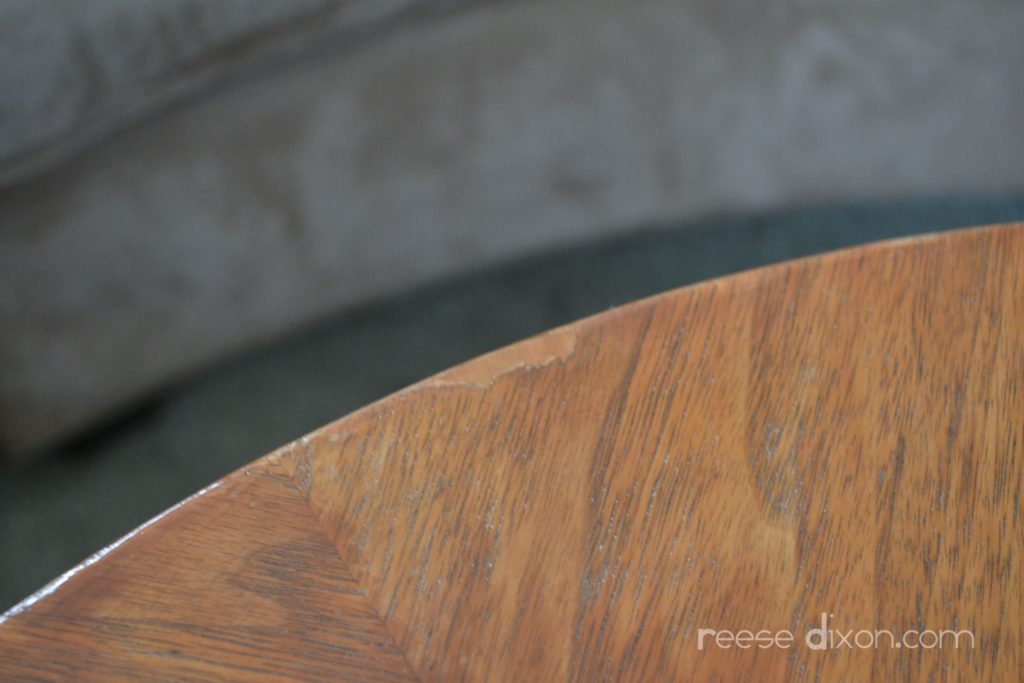
Once the stain is on, the only way you can spot that patched up spot is the change in the grain. From far away you don’t notice anything, and best of all it’s all a nice solid piece now.
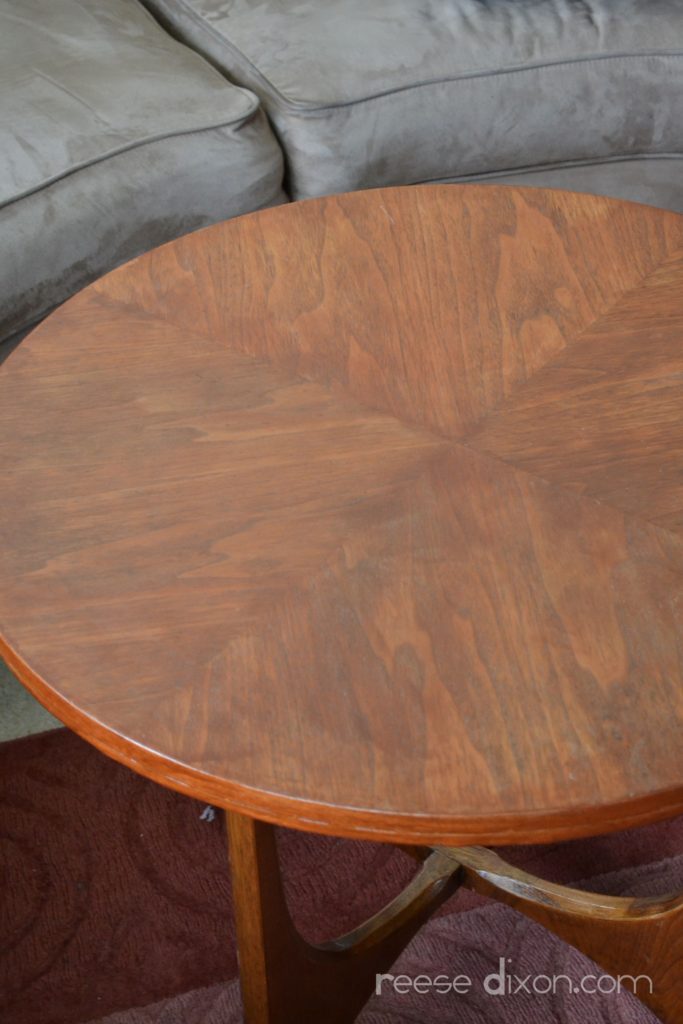
Now this neglected little table really shines. The glorious midcentury shape is highlighted by the glossy teak color and instead of a junky Craigslist find it looks like treasured antique. From now on I’ll have to keep my glitter projects far far away.
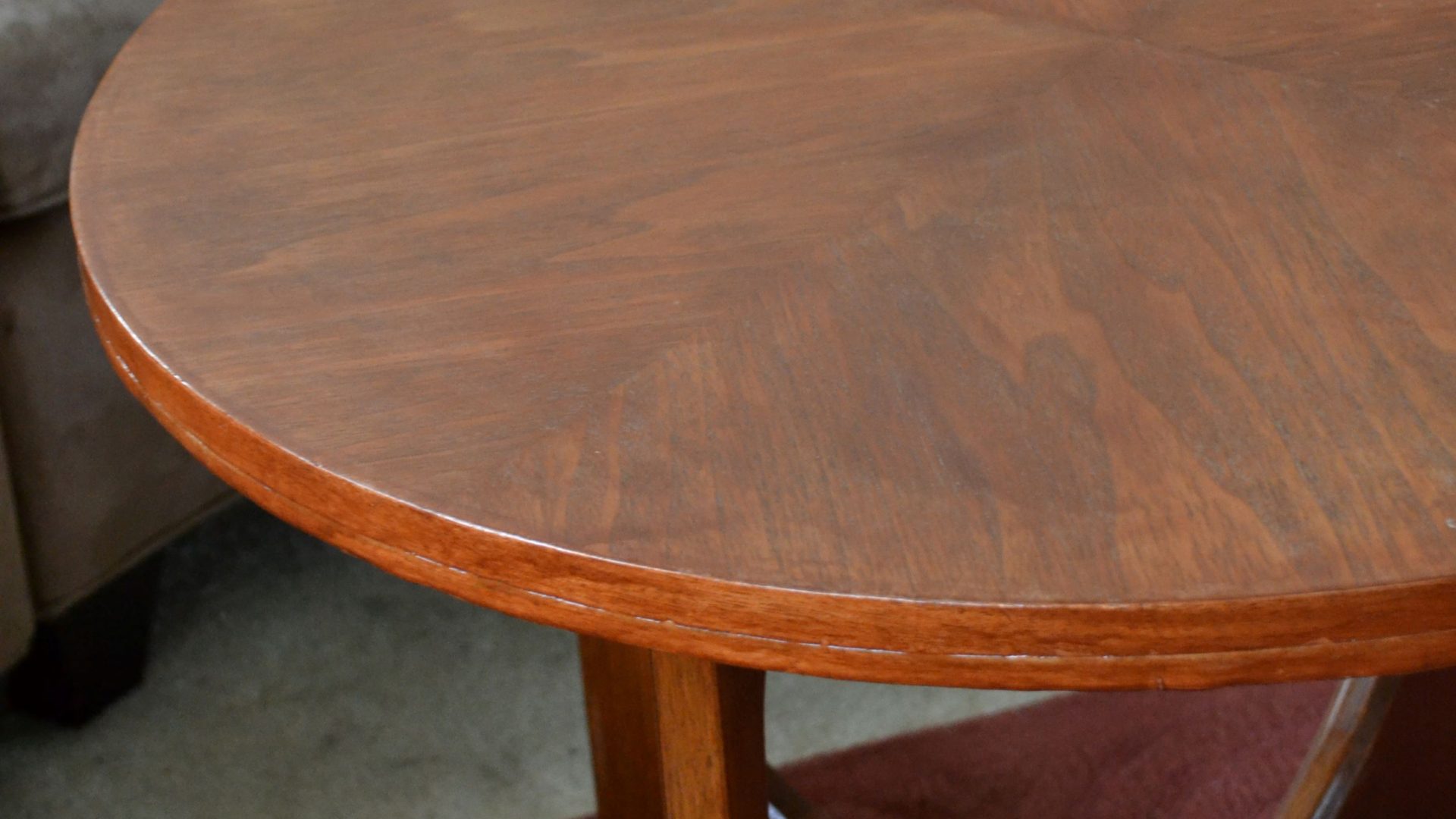
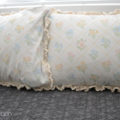



Looks great! I have to ask you your opinion on something… I got this great little nesting table set from my MIL, but it has lost major pieces of veneer. What are you opinions about outrightly stripping the veneer? It has a great grain underneath, so I can easily see this stained.
I am impressed… you need to make a little vinyl cloth table cover for when you want to craft.